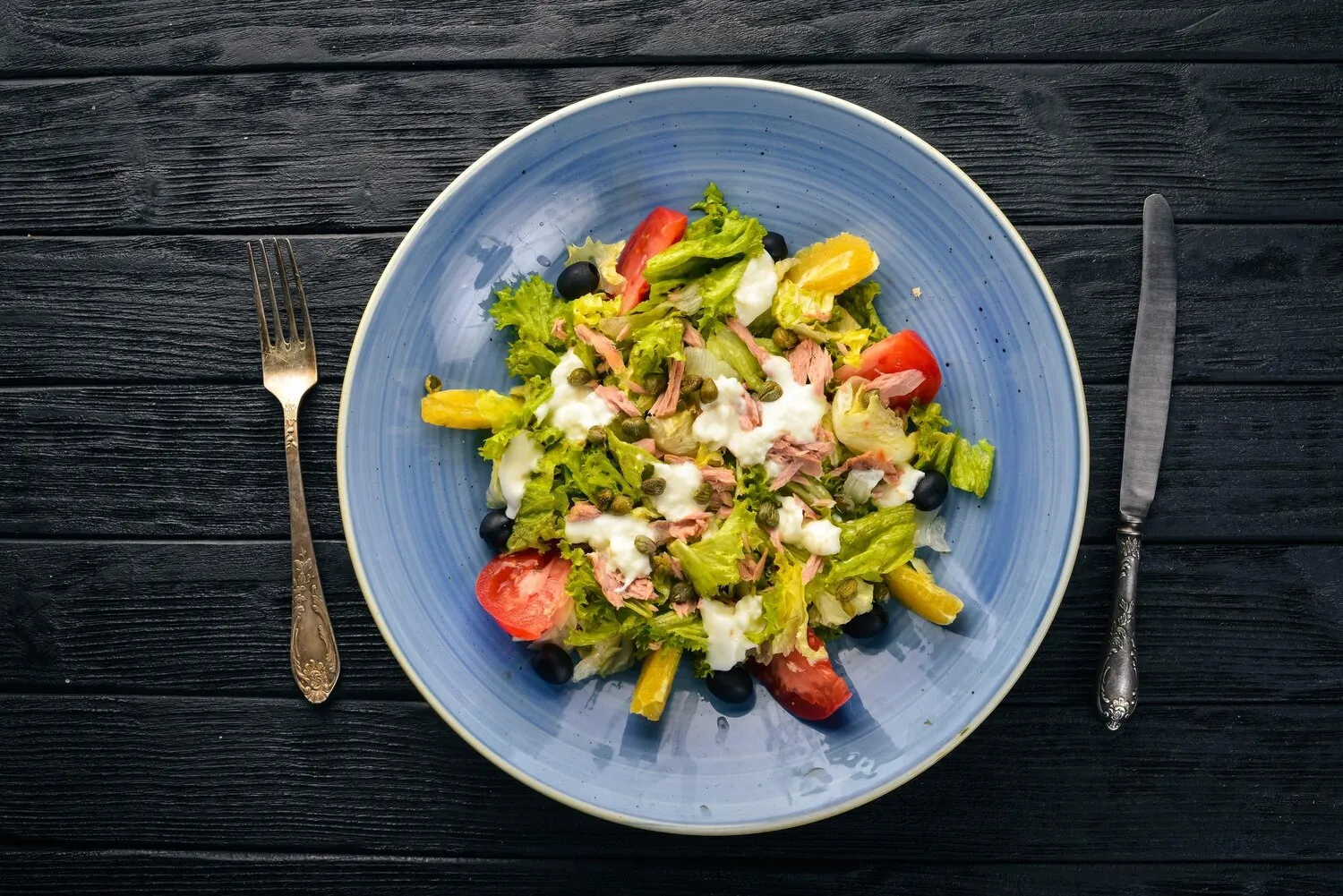
Ensaladas
Salads.
Nutrition Facts
* The % Daily Value (DV) tells you how much a nutrient in a serving of food contributes to a daily diet. 2,000 calories a day is used for general nutrition advice.
Salads, in their most basic form, have existed since antiquity, with evidence suggesting that ancient Romans and Greeks consumed simple mixtures of greens and herbs dressed with oil and vinegar. Over time, trade routes and culinary exchanges introduced new ingredients and techniques, leading to the diverse range of salads enjoyed worldwide today. From the simple garden salads to complex creations, salads reflect the local ingredients and culinary traditions of each region.
Salads often represent a healthy and refreshing meal choice across many cultures, reflecting a focus on fresh, seasonal ingredients. They can also signify celebration and abundance, appearing as part of elaborate feasts or casual gatherings.
Health and Wellness
In many Western cultures, salads are strongly associated with healthy eating and weight management. They are often consumed as a light lunch or side dish to balance heavier meals.
Regional Variations
Salads vary widely across different regions and cultures. For example, Greek salad features tomatoes, cucumbers, onions, olives, and feta cheese, while Caprese salad from Italy consists of tomatoes, mozzarella, and basil.
Social Gatherings
Large salads are often prepared for potlucks and family gatherings, offering a diverse range of ingredients to cater to different tastes and dietary restrictions.
Salad flavors are incredibly diverse, ranging from fresh and herbaceous to tangy, sweet, savory, and even spicy. The overall flavor profile depends heavily on the specific ingredients and dressing used.
The flavors in a salad are influenced by the components: fresh greens offer earthiness and crispness; vegetables like tomatoes, cucumbers, and peppers provide sweetness, acidity, and crunch; herbs add aromatic and savory notes; proteins like grilled chicken, fish, or beans contribute umami and richness; and dressings provide the final touch, ranging from light vinaigrettes to creamy, tangy, or spicy sauces. Sweetness can come from fruits or honey, while spiciness can be achieved with chili peppers or mustard.
Ingredient Quality
Use fresh, high-quality ingredients whenever possible. The better the ingredients, the better the salad will taste.
Dressing Application
Dress the salad just before serving to prevent the greens from becoming soggy. Use a light hand with the dressing to avoid overpowering the other flavors.
Texture Variety
Incorporate different textures, such as crunchy croutons, toasted nuts, or crispy vegetables, to enhance the eating experience.
Balance Flavors
Aim for a balance of flavors, including sweet, sour, salty, and savory. Experiment with different combinations of ingredients and dressings to find what you enjoy.
Explore additional Salads dishes and restaurants
Explore SaladsDiscover top dining spots and culinary experiences in Burgos.
Explore BurgosLearn more about the food culture, restaurant scene, and culinary heritage of Spain.
Explore Spain